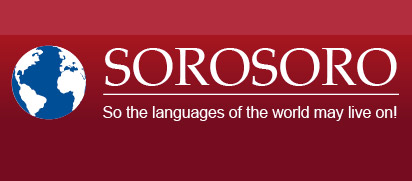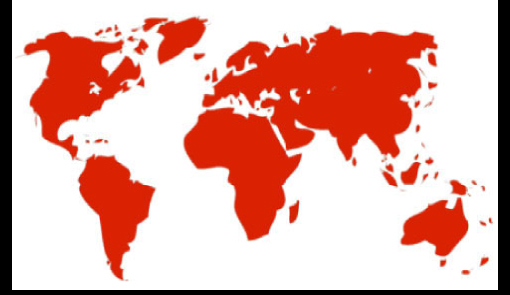Print  |
|


Māori
Editing and supplementary information provided by Elizabeth Pearce, School of Linguistics and Applied Language Studies, Victoria University of Wellington.
Data on Māori
Alternative names: Te Reo Māori (“the Māori language”).
Note: There is another language known as “Māori” spoken on the Cook Islands and usually referred to as “Cook Islands Māori” or “Rarotongan”, which has an official language status and is widely used there as a lingua franca. While it is relatively close to New Zeland Māori, the two idioms will be treated here as distinct languages.
Area: New Zealand. Māori is essentially spoken in the northern, central, and eastern parts of the North Island. Speakers are also found in all the urban centers of the country. Prior to colonization, occurred in the 18th century, Māori was spoken everywhere across the North and South Islands.
Dialects & variants: There is a traditional distinction made between three main Māori dialects: the North Island eastern dialect, the North Island western dialect, and the South Island dialect (nowadays extinct). Mutual understanding appears to be difficult between speakers of the different dialects. This distinction is mainly operative for elder speakers: among younger speakers these variants tend to blend, especially in the urban areas.
Classification: Māori belongs to the very large Macro-Austronesian language family – which includes some 1,200 languages spoken in Southeast Asia, across the Pacific, and all the way to Madagascar. Within this family, Māori belongs to the east branch of the Polynesian languages, and more specifically to the Tahitic subgroup.
New Zealand Māori is close to Cook Islands Māori (also known as Rarotongan, or Rarotonga, accordingly with the language’s main dialect), as well as to Tahitian and the other east branch Polynesian languages.
A language very close to Māori – Moriori – used to be spoken on the Chatham Islands, 650km east of New Zealand. Moriori is extinct at this point, and a few texts are all we know of the language.
Number of speakers: Stable estimates of the number of Māori speakers are difficult to obtain. A 2006 census accounted for 157,000 people, including different levels of command of the language. The 2001 Survey on the Health of the Māori Language suggests that only around 29,000 adults are able to speak the language “fluently”, most of them being over 50. All adult speakers of Māori are Māori/English bilinguals.
Status: Māori is one of the two official languages of New Zealand, alongside New Zealand sign language (NZSL) – English, although being the majority and dominant language, doesn’t have any official status. In theory, any citizen of New Zealand has a right to access official documents, public service, and a legal system in Māori, although in fact, the use of Māori in official documents and institutional bilingualism are extremely limited.
Education: Māori is a language of education at kindergarten level in the Kohanga Reo (“language nest”, specialized kindergarten schools), which accounted for some 9,000 children in 2006.
Māori is taught as a second language to children aged from 5 to 16. Several schools also offer a bilingual English/Māori program aiming to grow balanced bilinguals. In 2007, about 24,000 children and teenagers attended one of the different Māori or bilingual Māori/English learning programs.
While these programs are successful in getting younger generations to speak Māori, however, creating balanced bilinguals appears to be more difficult. For more on the subject please refer to Richard Hill’s article on the Sorosoro blog.
Māori is taught at university, but isn’t used as a language of teaching.
Literature: There is Māori script based on the Roman alphabet, as well as a tradition of literature dating back to the beginning of the 19th century. The production of literature has been constantly growing since the 1990s, although translations into Māori remain insufficient.
There are countless dictionaries, grammars, and teaching textbooks in Māori.
Media: Two national channels air programs in Māori, one of which (Te Reo) broadcasts in Māori – or Māori-subtitled – only. There are 21 Māori radio stations.
Vitality & Transmission: Despite being an official language, despite its presence in the media and education, Māori remains an endangered language. UNESCO considers Māori “vulnerable”.
Historical and sociolinguistic details
The Māori population was estimated to about 100,000 people recently before colonization. The colonization (which occurred quite late, beginning the 19th century) generated rapid decline of the Māori language and culture. The Māori population dropped to 48,000 at the end of the 19th century. The use of the language, stigmatized, declined until the 1970-80s to the benefit of English, the language of prestige, and that of the institutions. Around 1980, Māori was no longer a first language but for 20% of the Māori community.
Since the 1960s, demands from the defenders of Māori language and culture gradually reached a wider audience. In the 1970s the creation of Māori schools and the Kura Kaupapa Māori movement marked the beginning of a revitalization process for the Māori language. Little by little, the teaching of Māori as a second language developed, as well as symbolic gestures, means of diffusion, and official events aiming to promote the language. Thus the year 1975 marked the launch of a Māori Language Week, observed every year on the last week of July. In 1987, thanks to the Māori Language Act, Māori became an official language. The Māori Language Commission, the official Māori language promotion and regulation organization, was founded around the same time.
Nowadays 560,000 people declare themselves Māori. Yet under a quarter of them is believed to know the language. While the number of speakers has increased, the Māori population, with a higher fertility rate than the “European” population, has gained in proportion. The increase of Māori speakers since the beginning of the revitalization process is not significant.
The lack of detailed surveys regarding the language and proficiency of its speakers makes it difficult to assess vitality and transmission accurately. The using range of Māori in the public sphere remains very limited, which possibly casts a negative perception of the language among its speakers, forcing them to favor English, including in the private sector. For the time being, Māori appears to remain in a situation of diglossia in regards to English.
Even while the development of teaching, the progression of the language in the media, and the efforts led to promote the language have managed to slow down its erosion, there still is a long way to go before the language can reclaim a significant space within the Māori community and New Zealand as a whole.
A few links for further information
Peter Keegan’s website on Māori
Linguamón pages on New Zealand Māori and Cook Islands Māori
Māori Language Commission (Māori/English)
Te Puni Kōkiri (Ministry of Māori Development) (Māori/English)
Online Māori/English dictionary
List of Māori radios (online broadcasts)
Maorilanguage.net offers a great number of resources, online courses, and further links on the Māori language (Māori/English)
Bibliography
Bauer, Winifred 1993. Maori. With William Parker and Te Kareongawai Evans. London: Routledge.
Bauer, Winifred 1997. The Reed Reference Grammar of Maori. Auckland: Reed Books.
Harlow, Ray. 2001. A Maori Reference Grammar. Auckland: Pearson Education.
Please do not hesitate to contact us should you have more information on this language: contact@sorosoro.org








